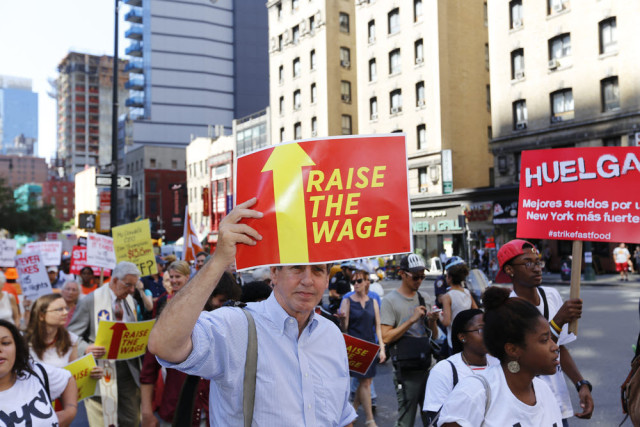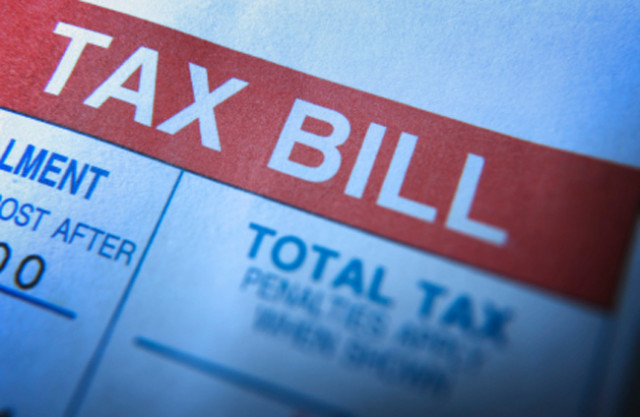There’s a scene in “Mission Impossible: Rogue Nation” that seems entirely plausible. The bad guy is transferring a huge amount of money, something like $1 billion. He has a hand-held device and clicks the button. We see a progress bar. The operation takes only a few seconds and then there is a ding. Done! Wow, impressive.
Surely, this is the way rich, powerful, well-connected people do it.
Actually, this is the most impossible thing that happens in the movie. It is more impossible than holding one’s breath for 3 minutes, more impossible than hanging onto the side of an airplane as it takes off and lands, and more impossible than riding a motorcycle at 120 miles an hour around curvy Moroccan roads and not crashing.
It can’t be done — not with any existing service. Viewers hardly question that it should be possible to move money that quickly. Sadly, it is not. Our money transmission technologies in real life are like the 1950s.
The only way to do what they did would be the use of a technology invented in 2009 but is still in extremely limited use, for now: cryptocurrency like Bitcoin operating on a distributed ledger. Otherwise, you are going to have to wait several weekdays, pay high fees, or have a trusted (credit-based) relationship with some third-party provider.
There is currently no way, using national money, to move a billion dollars from one person to another instantly. You can’t do it with a million dollars. There are better and worse ways to move thousands of dollars, but they all cost money, all require a trust relationship, and all take time. And there is no way to do this peer to peer using even $1 (except, of course, physically handing you a piece of paper in person).
National Currencies Limit Transfer Choice
Consider the most common way of moving money from me to you. It is ACH, which stands for Automated Clearing House. It moves a total of $40 trillion per year in 25 billion transactions, and is increasingly preferred over credit cards. It seems clean and, once you have verified accounts, works without a credit relationship.
However, it is slow. It takes at least one day and as much as four days, not including weekends. If you push on Thursday, the funds might not be there until Tuesday. It’s also expensive: 1-3%, which doesn’t sound like much until you realize you can get a nice car for how much it costs to move $1 million.
ACH is the most advanced, most common, most direct, most reliable method. And it is still terrible. It’s closely related to wiring money — an ancient method that uses Western Union (founded 1851!) or Moneygram (the new name for Travelers Express founded in 1940). These are very expensive services, though they are very fast.
PayPal is a mixed bag. If you have a balance or have it directly linked to your bank account, there are no fees, though there is a transaction limit of $10,000. If you are using a credit or debit card, the fees can be 3%. And the clearing time can be 3-4 business days, though if you have a balance in your account, the transfer is instant. This doesn’t really mean anything, though, because it takes 3-4 days to make the PayPal balance achieve liquidity outside of PayPal. If you are using it internationally, the fees go through the roof, regardless.
Other services improve on this record. Google Wallet is one of the best. It’s been known to be fast when it is linked up to your bank account. But you can’t know for sure. It could take several days. And there are strict limits to the amount to you can move. If you have more than $50,000 to send in a week, you are completely out of luck.
It is the same with Square Cash, except that this service absolutely requires a debit card hook up. It is mercifully free of fees, but you have to wait 30 days before your account is verified, and, until that time, you are limited to moving $1,000.
There is a fancy new application on Facebook that allows you to move limited amounts of money, and it is wonderful and exciting.
Except: it can take three to four days before your money movies via instant messaging. And Facebook doesn’t permit credit cards, debit cards, or other third-party payment systems.
SnapChat is experimenting with something similar.
There are many other services that are desperately trying to resolve the problem. Think of companies like Dwolla, which started in 2008 with such promise. But this company, just like PayPal and everyone else, bumped into a crazy system of regulations that forced compliance with every form of “know your customer” rules and navigating a highly regulated banking system with a money that is ultimately controlled by government and, therefore, moves digitally only according to its diktat.
Risks of Anachronistic Systems
Another big flaw is that any one of these trusted third parties can reverse, freeze, or seize the transaction funds and there’s nothing anyone can do to avoid this risk. For a billion dollar transfer, the risk of seizure, freezing, or reversal would be enormous and would last for months.
It’s not a surprise that innovation is difficult under these conditions. We can get ever fancier interfaces, ever more accessibility, ever friendlier ways of going about things. All of this is great.
But, in the end, transferring money from one person to the next bumps into the same problems: trust, fees, waiting times, dollar limits, and grave problems with international transfers. Each problem has a slightly different source. But they all add up to the weird reality that doing what would seem completely normal in 2015 — moving money instantly from here to there — is still exceedingly difficult.
How much further are we going to get into the digital age before our monetary and payment systems catch up? There is a crying need. Everyone knows it. This is why so many people are excited about Bitcoin.
Bitcoin blows up the current system through several critically new innovations. It combines a money and payment system into one single process, bypassing national monies altogether. It also bypasses the banking system completely through a ledger system that is open source and monitored through software. It also requires no trust, credit, or identity verification. If you have an Internet connection, and you hold some amounts of the currency, you can move that property from you to anyone else in the world without asking anyone’s permission.
The time for transaction processing is almost instant; the transaction clearing time can be several minutes. Compare that clearing time to 1-3 days for equity markets, 3-5 business days for a check or wire transfer, and 60-90 days for a credit card transaction.
The costs associated with moving cryptocurrency are negligible. For example, in December 2014, there was an $81 million transaction that cost just $0.40 to conduct. That compares to the $2.4 million or so this same transaction would cost using conventional payments systems and national monies.
This is a huge benefit of Bitcoin but only one feature of a larger innovation. Cryptocurrency completely rethinks the way we bundle, title, move, and verify all kinds of information. The potential applications for this technology are awesome to consider. It’s not just about money, though that would be significant enough. The spillovers affected titling, securities, and all forms of contracts.
The headlines over Bitcoin today are all about the fallout from the failure of one firm, Mt. Gox, an early mover in the space that mishandled its business. It’s just another in a long series of blows Bitcoin has endured in the 6 years of its existence. And yet, when you look at it today, you see an innovation that has been tested, survived, and thrived.
Bitcoin is Mission Impossible — an innovation that finally moves money into the 21st century — coming true.

Jeffrey A. Tucker
Jeffrey Tucker is Director of Digital Development at FEE, CLO of the startup Liberty.me, and editor at Laissez Faire Books. Author of five books, he speaks at FEE summer seminars and other events. His latest book is Bit by Bit: How P2P Is Freeing the World. Follow on Twitter and Like on Facebook.



















 FROM THE DIRECTOR’S DESK
FROM THE DIRECTOR’S DESK 






